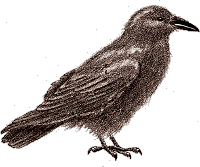
Dit is Raaf
De webpagina's van Erik Springelkamp
 |
Dit is RaafDe webpagina's van Erik Springelkamp |
Raaf
Categorieën
Archief
|
Hondsrug2015-01-31 16:51
An interesting thing I learned at the Day of the Archeology in April 2013 was the way our local geography was formed. The yellow-red piece of highground in this elevation map is essentially the province of Drenthe, with the City of Groningen at the Northern tip. The most obvious features here are the parallel ridges running from SSE to NNW on the East side of the plateau. The Easternmost being called the 'Hondsrug'. Zeijen2009-06-14 19:53
Een klein hunebed, niet heel indrukwekkend, midden in het veld, zij het met wat eerbiedige bomen er omheen. Toch laten de vergezichten zien dat het indertijd, toen de reliefverschillen groter waren door het minder hoog gegroeide veen in de laagten, een dominante plek geweest moet zijn.
|
||||||||||||||||||||||||||||||||||
| Top |